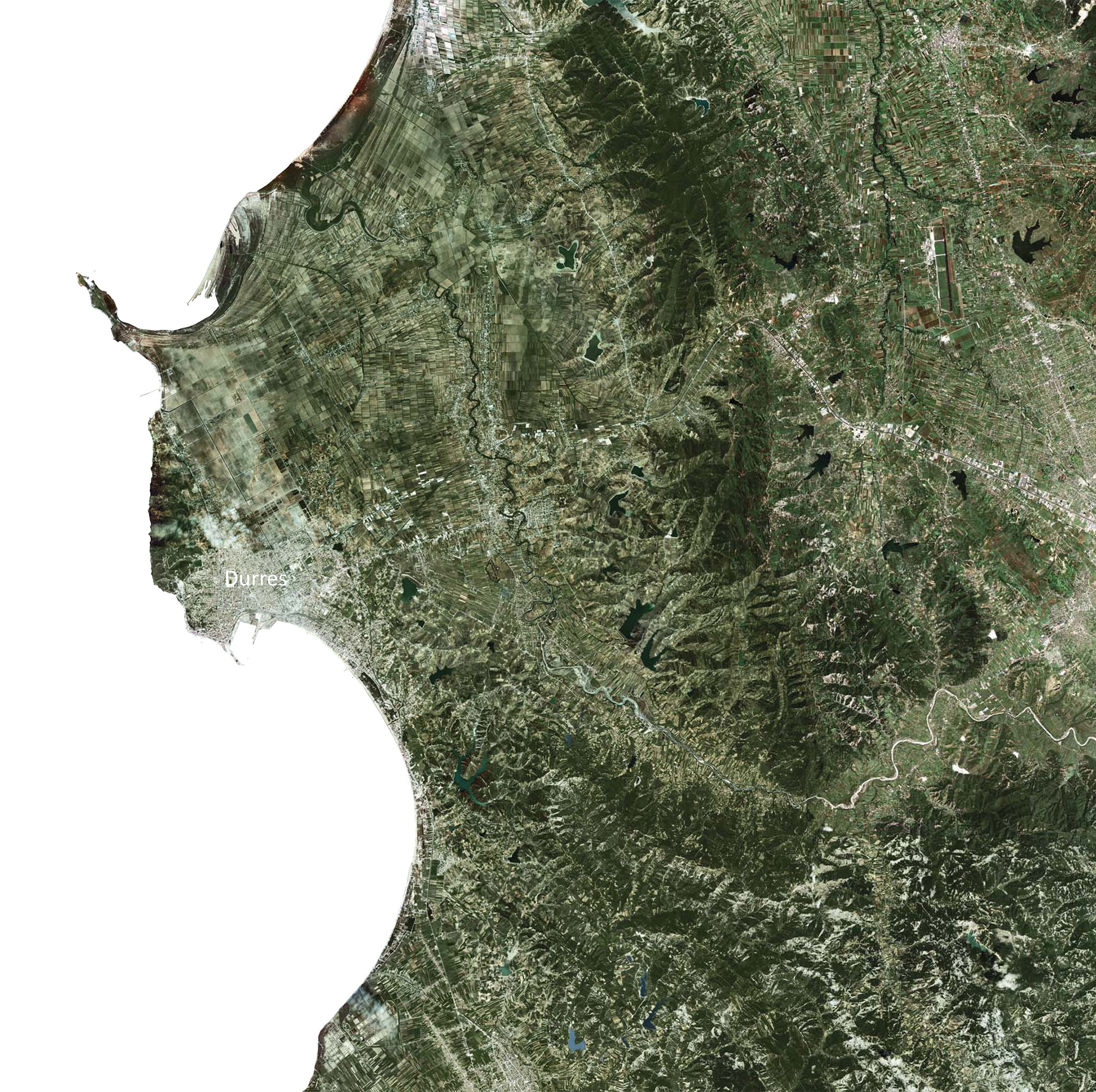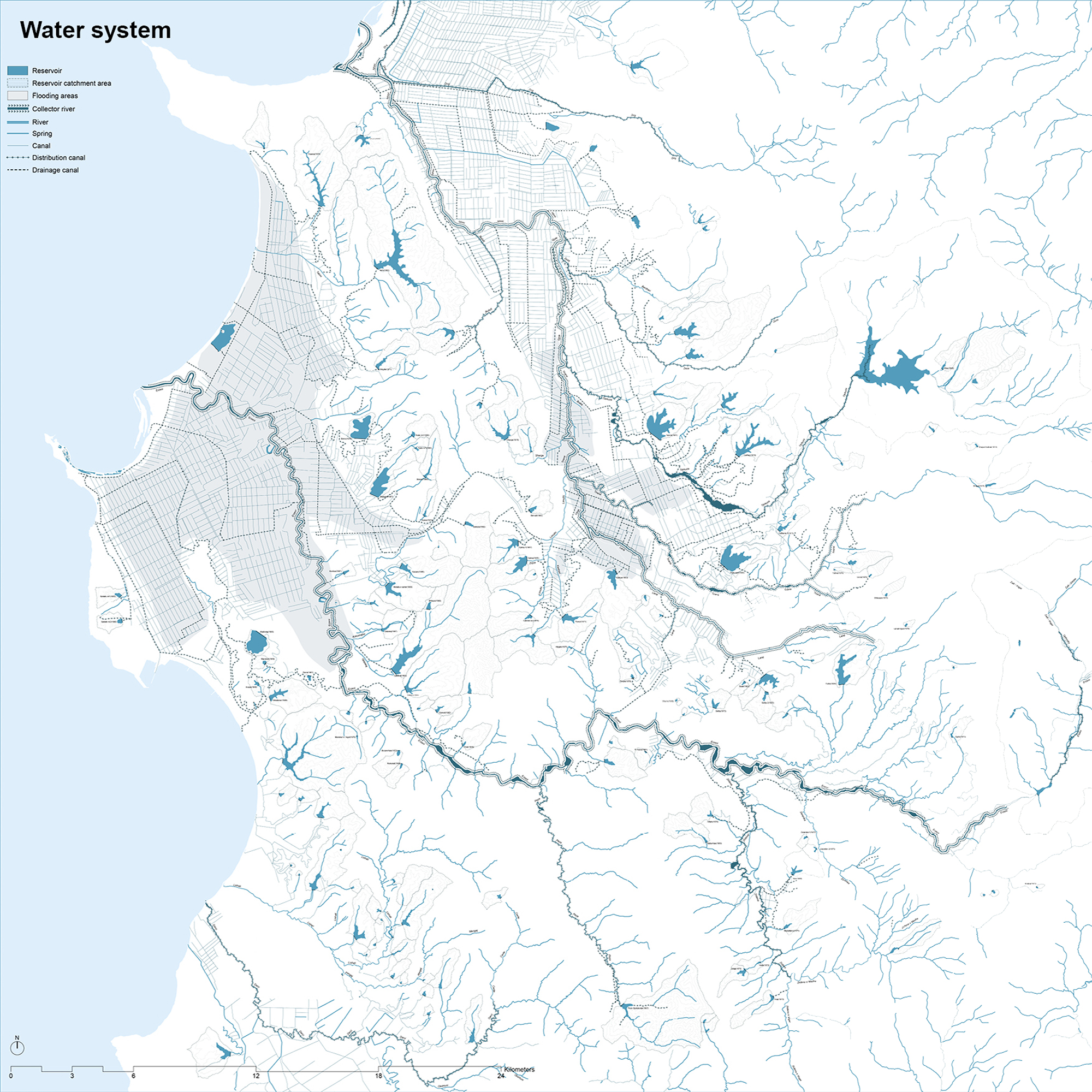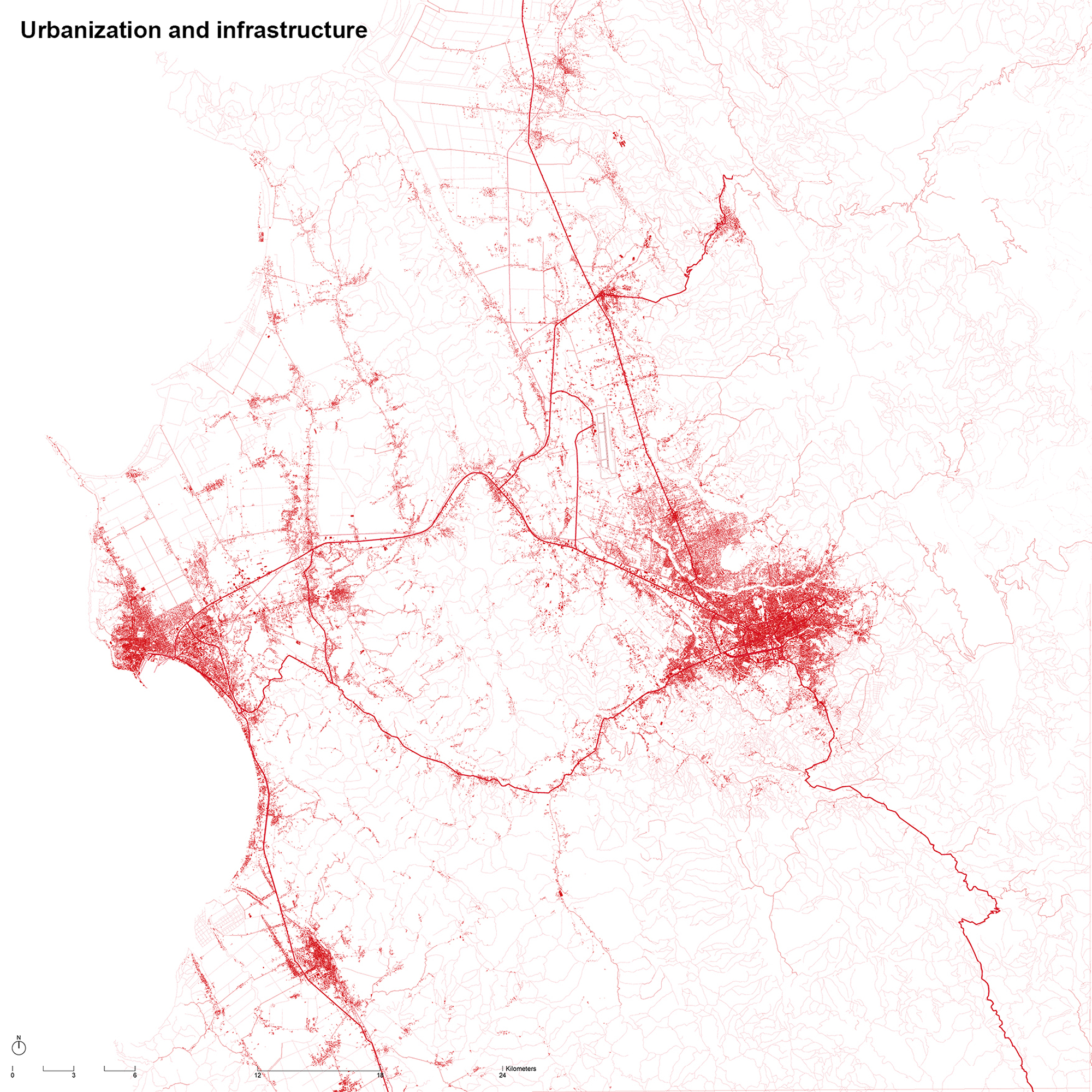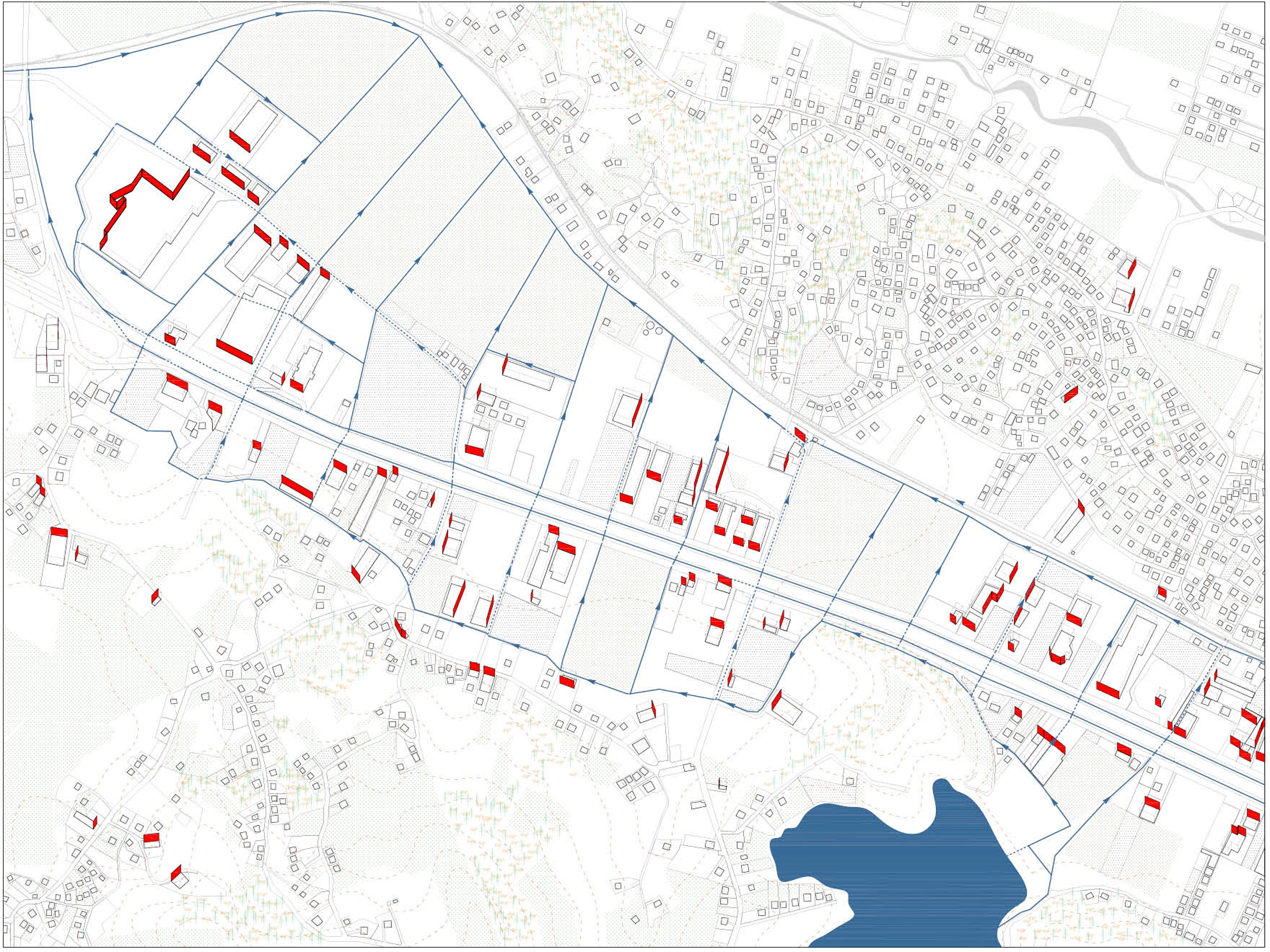100 Lakes
Using water as a tool for interweaving systematic landscape
Location: Tirana-Dürres, Albania | Year: 2013
Collaborators: Bogdan Ilie, Călin Lambrache, Tao Cai, Wei Lu, Zhongkai Zhou
Organizers: Katholieke Universiteit Leuven








"100 Lakes" is a study on the post-communist development of the Tirana – Durrës region in Albania. The first part focuses on the understanding of the role played by a series of lakes distributed in the territory. Through field-work, research and mapping, a monumental irrigation infrastructure came to light. This system is made up of a network of water catchment areas, lakes, canals and rivers. It covers the region like a mesh evenly distributing the water throughout the seasons.
Two dynamics: The Tirana - Durrës highway has become a hard-spine of development because of its strategic location between the main port and the capital city of Albania. At the same time the strongest structuring element of the territory is the inherited irrigation system. The urbanization that is taking place along the Tirana – Durrës highway is influenced by these two dynamics. On the one hand the development is in a direct relationship with the highway while on the other hand it’s organized in a pattern informed by the water system. It generates a strip where these two systematic landscapes are superimposed.
Water as a tool for interweaving systematic landscapes:
The second part of the study focuses on a design project. The proposal focuses on the relationship between the linear development along the Tirana – Durrës highway and the Kashar sub-system. By restructuring the water flows, the sub-system is able to support the existing and future densities while protecting the productive landscape from contamination.
Two dynamics: The Tirana - Durrës highway has become a hard-spine of development because of its strategic location between the main port and the capital city of Albania. At the same time the strongest structuring element of the territory is the inherited irrigation system. The urbanization that is taking place along the Tirana – Durrës highway is influenced by these two dynamics. On the one hand the development is in a direct relationship with the highway while on the other hand it’s organized in a pattern informed by the water system. It generates a strip where these two systematic landscapes are superimposed.
Water as a tool for interweaving systematic landscapes:
The second part of the study focuses on a design project. The proposal focuses on the relationship between the linear development along the Tirana – Durrës highway and the Kashar sub-system. By restructuring the water flows, the sub-system is able to support the existing and future densities while protecting the productive landscape from contamination.
Albania,
Research,
Water Urbanism